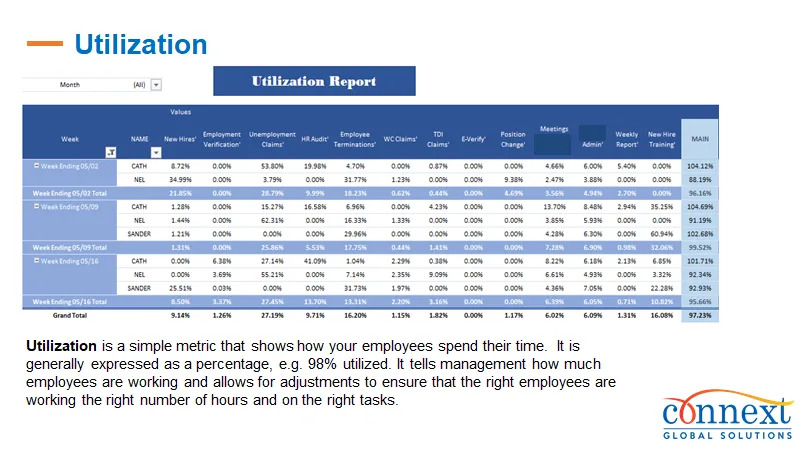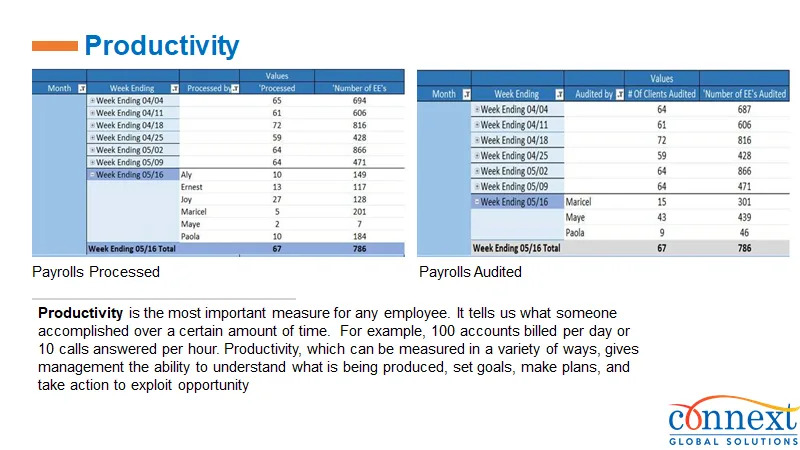Your tactical how-to guide for a smooth transition and continued operational excellence
Key Summary
- Switching BPO providers doesn’t have to mean disruption. With the right structure, knowledge transfer, and cultural alignment, it can boost productivity.
- Clear goals, strong governance, and risk management are essential to protect output and minimize downtime.
- Connext helps companies transition effortlessly by building dedicated offshore teams with secure infrastructure, operational control, and full management support.
- The result: a smoother switch, faster performance gains, and a scalable model that grows with your business.
Introduction
Switching your BPO provider can feel like walking a tightrope. On one hand: the need for better service, cost control, or flexibility. On the other hand: risk of disruption, productivity loss, and customer impact. But with the right approach, you can avoid the pitfalls and instead use the transition as an opportunity to upgrade your operations.
In this blog, you’ll learn how to switch BPO providers without losing productivity, from initial planning and knowledge transfer to team culture and measurement. We also share real world client spotlights and highlight how our model at Connext helps companies build high performing offshore teams with retention and output at the forefront.

Step 1: Set Clear Objectives & Scope
Before engaging with a new provider, clarify exactly why you’re switching and what you expect to achieve. Are you after-cost savings? Better quality? Different skills? More strategic functions?
- Define KPIs up front: turnaround time, error rate, CSAT, cost per transaction.
- Map current service levels and identify degradation risk zones.
- Build a transition budget: not just cost per head but expected output improvement.
Industry research stresses this stage: a guide from Unity Connect emphasizes that successful BPO transitions start with “thorough documentation, clear communication and continuous monitoring”. Unity

Step 2: Partner & Contract Selection
Switching providers is more than a procurement exercise; it’s a transition exercise. Choose a partner with experience in transitions, not just steady-state service.
- Evaluate: vendor experience, tools, scalability, cultural fit, risk management.
- Include clauses for knowledge transfer, ramp-up support, and performance guarantees.
- Use your retention and performance benchmark: At Connext, dedicated teams with clear performance metrics deliver 30–50% higher task completion efficiency compared to transactional models.

Step 3: Transition Planning & Knowledge Transfer
The handover phase is where many productivity losses happen. You must structure the transition with precision.
- Develop a detailed transition plan: timeline, roles, responsibilities, cutover points.
- Ensure comprehensive knowledge transfer: processes, systems, tacit knowledge, SLAs.
- Don’t forget to change management: internal resistance, fear of job loss or role change can undermine productivity.
- Build a dedicated transition team: one client example shows that when internal and provider leads cooled the transition, turnaround time improved by 35%.

Step 4: Cultural & Operational Alignment
A new provider means new people, new processes, new rhythms. Without alignment, productivity suffers.
Team Structure & Culture
Ensure your offshore team is treated as an extension of the business, not an outsourced afterthought. The “Connext way” emphasizes dedicated teams (not pooled labor), manager matching culture fit, and connection programs to keep engagement high.
Tools, Reporting & Governance
Use dashboards, real-time engagement data (e.g., our CNow™ algorithm) and firm governance practices so you know how your team performs from day one. Measurement matters more than ever in a provider switch.

Extra – Client Spotlights: Our Outcomes in Action
Client Spotlight 1 – Banking Support Team
A regional bank partnered with Connext to build a cross functional offshore team supporting customer inquiries, data validation and back-office operations.
- 35% faster turnaround time
- Improved service accuracy
- Increased customer satisfaction
📘 Download full case study
The key learning: when you treat the offshore team as part of your business, you maintain service levels and improvement, even during transition.
Client Spotlight 2 – Accounting Firm Augmentation
A U.S. accounting firm engaged Connext to add experienced finance professionals into their systems.
- 25% faster reporting
- 20% improved accuracy
- 100% transparency and compliance
Download full case study
This shows that switching providers or building new talent pools doesn’t mean a compromise; it can be a productivity jump.

Step 5: Risk Mitigation & Productivity Safeguards
To switch suppliers and keep productivity high, you must proactively mitigate risks:
- Service continuity: implement parallel run, hyper care phase, fallback provider or internal buffer.
- Technology integration: ensure tool access, data migration, and security protocols are established early.
- Cultural handoff: engage legacy provider staff (if possible) for overlap support; prepare communication to all stakeholders.
- Performance tracking: monitor early stage KPIs, attrition, service errors. Quick action is critical if productivity dips.
Best practice guides note that effective risk management, especially in knowledge transfer and stakeholder engagement, is key to successful transitions.

Step 6: Scaling & Continuous Improvement
Once the new provider is live and stable, momentum matters. Don’t just measure cost; you must measure output, quality, engagement, and long-term value.
- Use benchmarking (e.g., our 30–50% higher efficiency figure) to set improvement targets.
- Treat the offshore team as a strategic partner with career paths, feedback loops, and culture programs.
- Continuous review: quarterly business review, process audits, escalation paths.
- Optimize: rescope lower value tasks, ramp up higher value work, and refine governance.

Conclusion
Switching BPO providers can feel risky, but when executed with planning, alignment, and performance focus, it becomes a powerful lever for growth. At Connext, we help companies build offshore support teams that don’t just do the work; they thrive in it.
Schedule a strategy session with us to learn how to switch providers without losing productivity.
Frequently Asked Questions
Typically, 4–8 weeks depending on process complexity, data migration needs, and team size. Connext accelerates this timeline through prebuilt onboarding frameworks.
Our transition managers coordinate directly with both providers to ensure continuity, managing knowledge transfer diplomatically and securely.
We use phased transitions, overlapping teams, and parallel operations to ensure output stability before the final handoff.
No, Connext maintains ISO-certified security protocols and robust infrastructure in the Philippines, Colombia, Mexico, and India.
We recruit cultural fit, match management styles, and integrate client communication norms through tailored onboarding programs.
Track SLA compliance, error rate, CSAT, output per FTE, and engagement scores. Connext dashboards make these metrics visible in real time.
We’re not a vendor, we’re you’re staffing and EOR partners. You retain full control of your team’s workflow, while we handle recruitment, compliance, and operations.
Yes. Our service centers across the Philippines, Colombia, Mexico, and India provide multilingual support to fit your customer base.
Our governance structure includes escalation paths and quarterly reviews, ensuring performance stability and proactive improvement.
Most clients can begin discovery and planning within one week. Book a strategy session to outline your transition roadmap.









